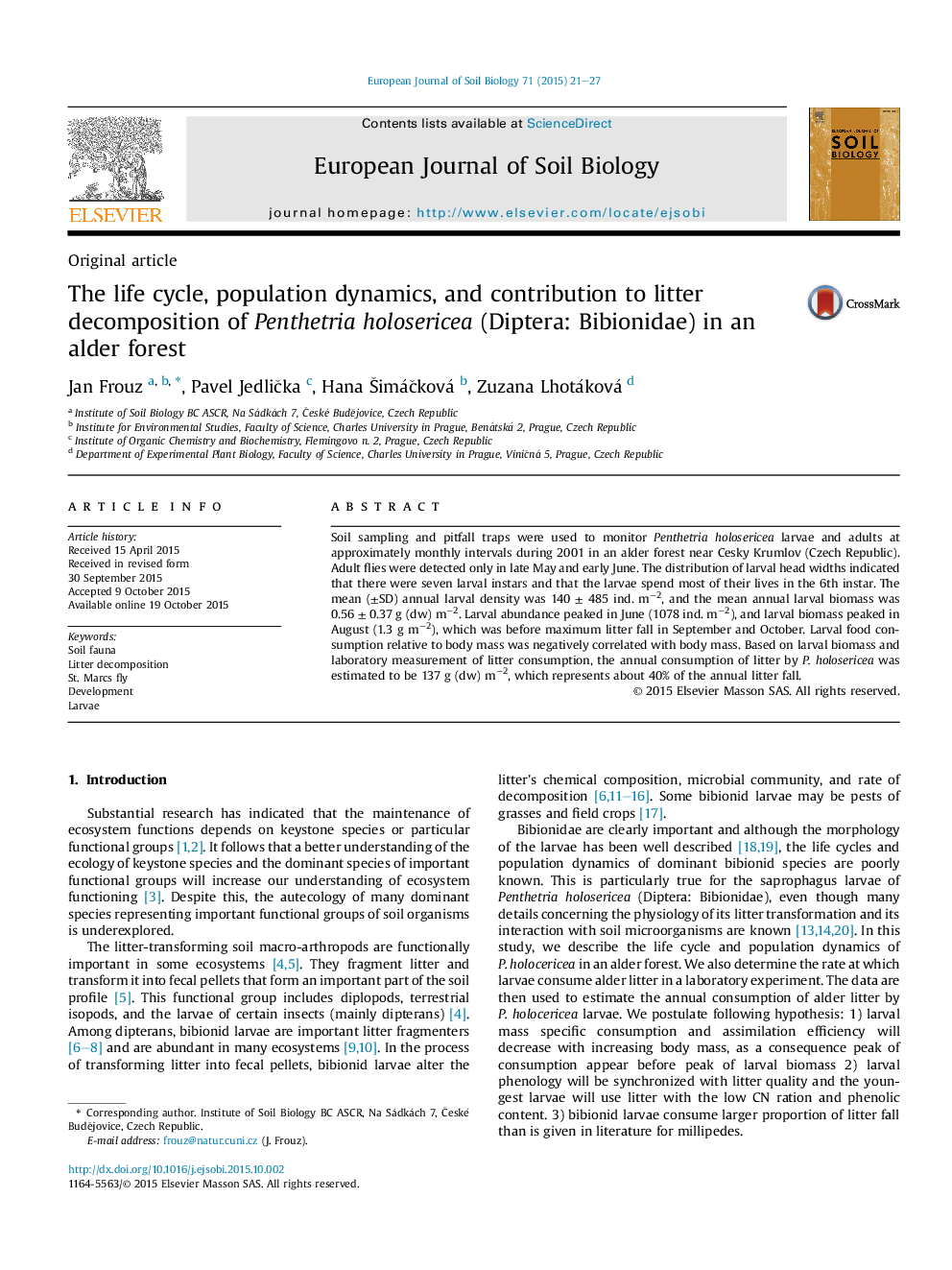| Article ID | Journal | Published Year | Pages | File Type |
|---|---|---|---|---|
| 4391685 | European Journal of Soil Biology | 2015 | 7 Pages |
•Life cycle biomass and food consumption of Penthetria holosericea was described.•P. holosericea larvae consume about half of annual litter fall.•Maximum of feeding occur far before litter fall.
Soil sampling and pitfall traps were used to monitor Penthetria holosericea larvae and adults at approximately monthly intervals during 2001 in an alder forest near Cesky Krumlov (Czech Republic). Adult flies were detected only in late May and early June. The distribution of larval head widths indicated that there were seven larval instars and that the larvae spend most of their lives in the 6th instar. The mean (±SD) annual larval density was 140 ± 485 ind. m−2, and the mean annual larval biomass was 0.56 ± 0.37 g (dw) m−2. Larval abundance peaked in June (1078 ind. m−2), and larval biomass peaked in August (1.3 g m−2), which was before maximum litter fall in September and October. Larval food consumption relative to body mass was negatively correlated with body mass. Based on larval biomass and laboratory measurement of litter consumption, the annual consumption of litter by P. holosericea was estimated to be 137 g (dw) m−2, which represents about 40% of the annual litter fall.
